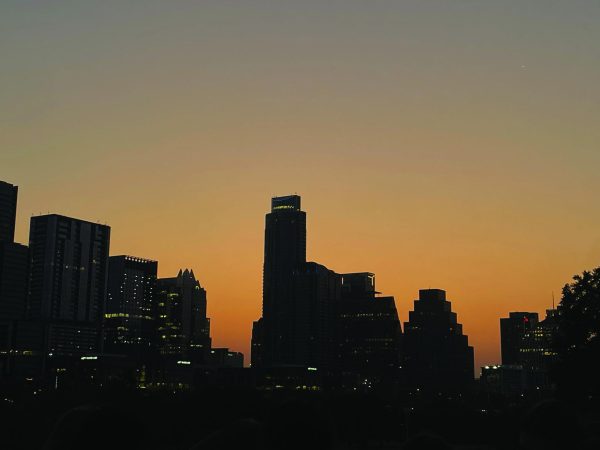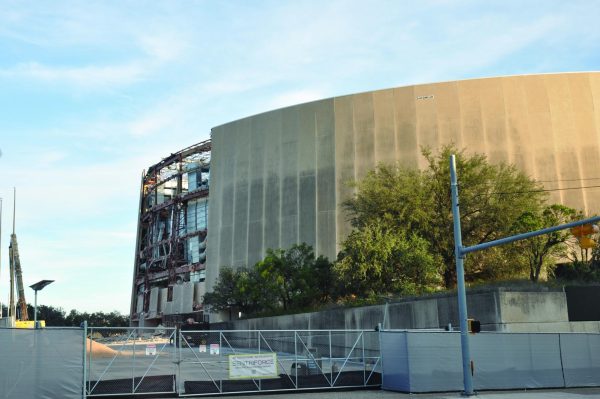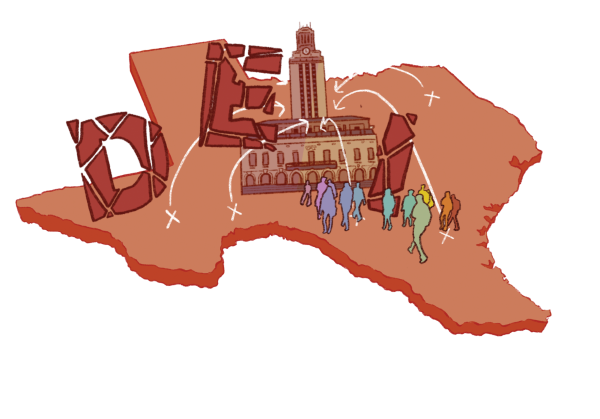Gentrification in a Growing Austin
May 28, 2021
The city of Austin is rapidly growing, as cited in the Austin Business Journal. From 2010- 2019, it was the fastest growing metro area in the country. From 2018-19, about 3,840 people moved to Austin each month, according to local news website Austonia. Texas, as a whole, attracts new residents, especially from California, because of its lower cost of living, according to the Kinder Institute at Rice University. According to Redfin, these new people have $200,000 more to spend on real estate than locals. Parts of Austin, especially the east side, are already seeing the effects of an increase of residents, according to archaeologist and community advocate Fred McGhee.
Gentrification occurs when several wealthier people move to a low-income neighborhood, like the new residents from California moving to the east side of Austin, according to Katherine Way, a clinical professor and researcher at the University of Texas at Austin. Way said gentrification is an issue with far-reaching effects.
“Gentrification is reshaping our city in ways that have lots of very negative impacts for who our city is, what our city is now, what our city will be in the future,” Way said. “And what I’m most concerned about as a researcher is an impact that gentrification has in driving displacement of vulnerable populations and reshaping our city to become a place that’s very exclusionary and that doesn’t provide for, specifically, African American and Hispanic residents.”
Rachel Stone is the assistant executive director of the Guadalupe Neighborhood Development Corporation (GNDC). The GNDC works to give housing to those in need in the rapidly changing Guadalupe neighborhood of Austin. Stone said the group used to work to protect the neighborhood from gentrification, which caused local businesses and residents to move out for chains and higher income residents.
“Gentrification is the loss of culture, neighborhood ties or housing in a neighborhood that is seeing increased housing prices due to wealthier people moving into the neighborhood,” Stone said. “So not just that somebody’s property taxes have gone up, but their property taxes have gone up, and they’ve seen neighbors and local businesses have to move away, and that that’s led to a change of culture in the surrounding neighborhood.”
Strong Towns Senior Editor Daniel Hurriges said that the parts of cities that tend to experience gentrification the most are poorer and underdeveloped neighborhoods, and according to Way, in Austin, this is the east side. Hurriges also said many cities’ poorer neighborhoods have been disinvested in, where nonwhite residents were unable to get loans for mortgages and home improvements. These neighborhoods have historically been seen as bad areas due to racism that started in the 1930s.
“When you see [gentrification] happening really rapidly and really disruptively, which I think is the case in some parts of Austin, for example, actually what has happened is that you’ve had neighborhoods that have really been disinvested in for a long time,” Hurriges said.
Way said this disinvestment in certain neighborhoods leads to lower real estate prices in one part of the city. This lower cost of living in the center of the city is exactly what attracts wealthier residents in what is referred to as the “Great Inversion.”
“Now, the center of the city is the place to live, and so you have folks moving into Austin with higher incomes and even people who live here who no longer want to have the 45-minute commute, and traffic makes it even worse,” Way said. “So you have this demand for houses in the center of the city, that people with higher incomes want to live in the center of the city, and at the same time, we have these lower real estate prices. It’s just a recipe for gentrification.”
Gentrification doesn’t just affect people’s homes; it also affects local business and a neighborhood’s overall culture, according to Way. Sometimes, local businesses can no longer afford their rent in gentrifying neighborhoods.
“Longtime businesses are absolutely impacted by the increase in property values that occurs as part of gentrification,” Way said. “Business owners are largely renters, and renters are typically more vulnerable than property owners. As prices and housing values go up, rents go up, and at some point, many businesses can just no longer afford to stay in their communities where they are located.”
Parts of Austin, mainly the east side, have been gentrifying for almost 20 years now, according to Way. He said that with companies like Tesla moving to Texas, gentrification of Austin’s east side will most likely continue.
“Those companies bring in higher-wage workers, and higher-wage workers can afford to pay more for rent or to buy a home,” Way said. “And when you have hiring and a push to pay more, the market is going to respond to that by increased rents and by increased home sales prices. So versus a restrictive amount of housing supply that we have in the city at these price points and as people come in with higher incomes, it drives up [the price].”
Recently, many large companies like Tesla, Oracle and Hewlett-Packard have announced they plan to move to Texas. According to Stone, there is a solution to the housing crisis caused by these moves: large tech companies should fund affordable housing in the areas they plan to move to.
“If Tesla was willing to build affordable housing or work with an affordable housing developer to try to make housing for some of their lower-income workers or help keep some of the people in the neighborhoods, there are ways we could get around it,” Stone said.
Herriges said that a way to reduce the effects of gentrification is to spread out development throughout a city. If the entire city develops as a whole, it prevents certain neighborhoods from changing too fast.
“One of the things that we say at Strong Towns is that every neighborhood needs to be allowed to add people to add to your buildings to gradually evolve to the next level of urban density because if you allow growth everywhere, then you don’t get the firehose of explosive growth in a few places,” Herriges said. “And if that fire hose is where people really get mad about gentrification because their neighborhood is rapidly changing, in a way, that pushes people out.”
Stone said the best way for the average Austinite to help is to speak out about the issue. Those living in a gentrifying neighborhood should talk to their neighbors about what they want for their neighborhood.
“I think people have to look at what they want,” Stone said. “I don’t think it’s possible to just stop gentrification because it is sort of like an economic wave. I do think there are ways to help people remain in their neighborhoods and to help make good asks of these companies and of the city to establish resources to help people stay.”









